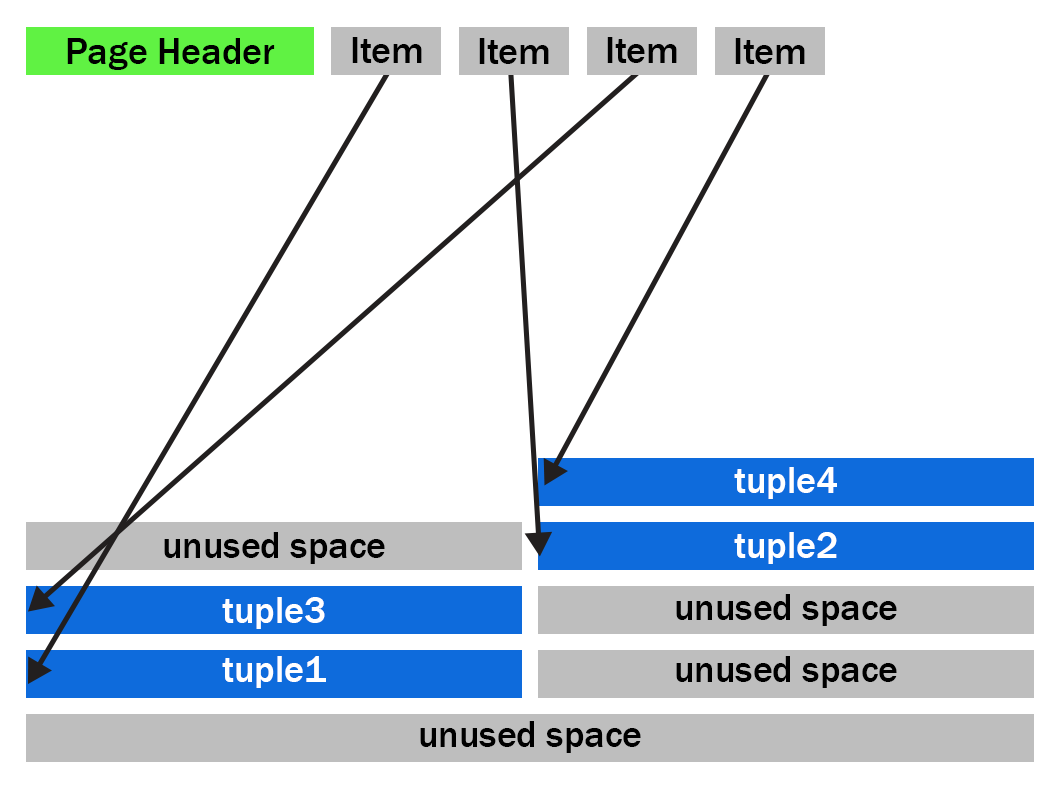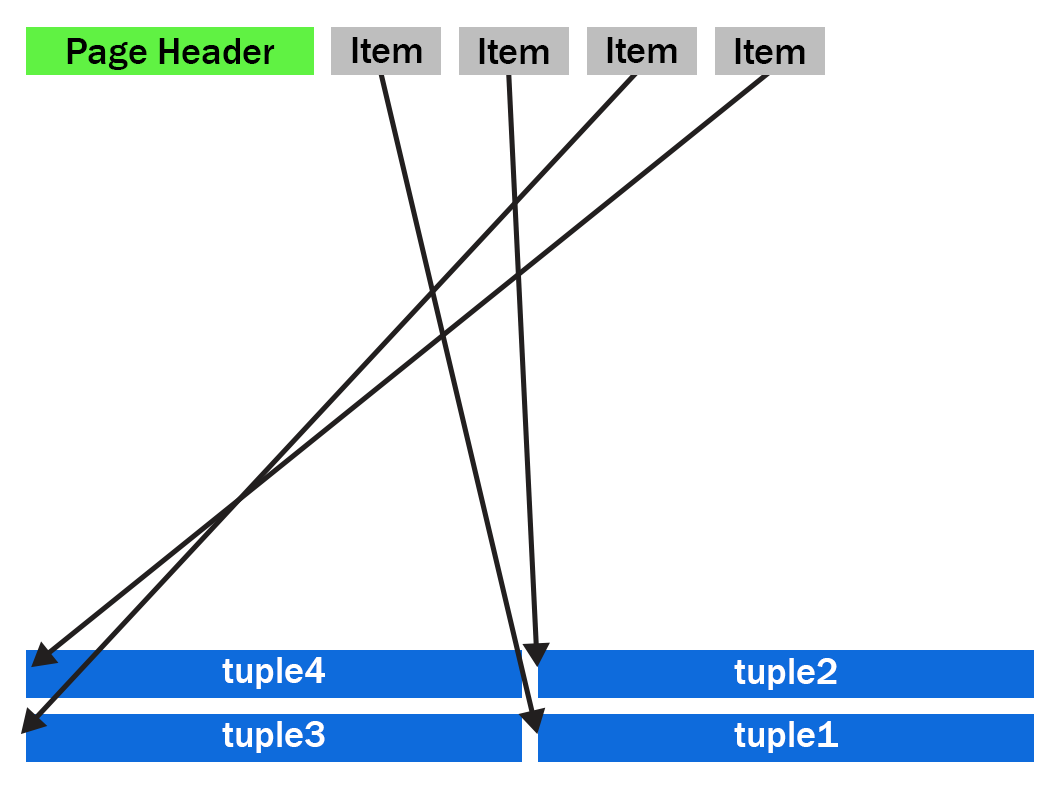POSETTE 2025 is a wrap! 🎁 Thanks for joining the fun. Missed it? Watch all 42 talks online.
This post by David Rowley was originally published on the Azure Database for PostgreSQL Blog on Microsoft TechCommunity.
One of the performance projects I’ve focused on in PostgreSQL 14 is speeding up PostgreSQL recovery and vacuum. In the PostgreSQL team at Microsoft, I spend most of my time working with other members of the community on the PostgreSQL open source project. And in Postgres 14 (due to release in Q3 of 2021), I committed a change to optimize the compactify_tuples function, to reduce CPU utilization in the PostgreSQL recovery process. This performance optimization in PostgreSQL 14 made our crash recovery test case about 2.4x faster.
The compactify_tuples function is used internally in PostgreSQL:
- when PostgreSQL starts up after a non-clean shutdown—called crash recovery
- by the recovery process that is used by physical standby servers to replay changes (as described in the write-ahead log) as they arrive from the primary server
- by VACUUM
So the good news is that the improvements to compactify_tuples will: improve crash recovery performance; reduce the load on the standby server, allowing it to replay the write-ahead log from the primary server more quickly; and improve VACUUM performance.
In this post, let’s walk through the change to compactify_tuples, how the function used to work, and why the newly-rewritten version in Postgres 14 is faster.
Profiling the recovery process highlighted a performance problem
In PostgreSQL, the write-ahead log (called the WAL) contains sets of records with instructions and data to go with the instructions. These WAL records describe changes which are to be made to the underlying data. WAL is used to make sure each change to the data is durable in the event that PostgreSQL stops running before the underlying data is written to disk. When PostgreSQL restarts after a shutdown, all of the WAL since the last checkpoint must be replayed as part of the recovery process. The WAL is replayed in order, to reapply changes to pages which may not have been written out to disk before the database shutdown.
We did some profiling of the PostgreSQL recovery process after purposefully crashing the database after running a benchmark of an UPDATE-heavy, OLTP type workload. These profiles showed that much of the CPU load was coming from the replay of "HEAP2 CLEAN" WAL records. HEAP2 CLEAN records defragment pages in tables to remove free space left by dead tuples. HEAP2 CLEAN records are added to WAL whenever the page becomes full and more space is needed on the page.
A tuple is PostgreSQL’s internal representation of a row in a table. A single row may have many tuples representing it, but only one of these tuples will be applicable at any single point in time. Older running transactions may require access to older versions of the row (another tuple) so they can access the row as it was at the point in time when the transaction started. UPDATEs to rows cause new versions of the tuple to be created. Creating multiple versions of each row in this way is called multi-version concurrency control (MVCC.)
Removing unused space from heap pages
To understand what HEAP2 CLEAN does in PostgreSQL, we’ll need to peer into the heap page format. Let’s look at a typical (simplified) heap page with some tuple fragmentation:

We can see that after the page header comes an array of “items.” The items act as pointers to the start of each tuple. PostgreSQL writes tuples to the page starting at the end and works backwards. The page is full when the item array and tuple space would overlap.
You should also notice that the tuples at the end of the page are not exactly in the reverse order of the item pointers. Tuples 2 and 3 appear out of order here. Tuples can become out of order after some records have been updated in the page and an old item pointer gets reused.
We can also see that that there’s quite a bit of unused space on the page in figure 1. The unused space is due to VACUUM removing tuples. The HEAP2 CLEAN operation will get rid of this unused space.
In PostgreSQL 13 and earlier, the HEAP2 CLEAN operation would turn the above into:

We can see that the empty space is gone and the tuples are now pushed up to the end of the page. Notice the tuples remain in the same order as they were, with tuples 2 and 3 remaining in the same swapped order.
How heap page compactification used to work, prior to PostgreSQL 14
The compactify_tuples function takes care of the page compactification operation for us. All the changes made are in the compactify_tuples function. Before this change, the compactify_tuples function would perform a sort on a copy of the items array. This sort allowed the tuples to get moved starting with tuples at the end of the page. In this case, the tuples are moved starting with tuple1, followed by tuple3, tuple2 and tuple4. To determine which tuples to move first, compactify_tuples used the generic C qsort function with a custom comparator function. Sorting the item array in reverse tuple offset order allowed the tuples to be moved starting at the tuples at the end of the page.
Since heap pages can contain up to a few hundred tuples, and due to how often pages can be compactified in UPDATE heavy workloads, the qsort call could use a lot of CPU. The sort overhead was not as bad with pages just containing a few tuples.
Do we really need to sort? … Well, yes and no. If we moved tuples in item array order and didn’t sort, then we could overwrite tuples later in the page. For example, in figure 2, if we moved tuple2 toward the end of the page before moving tuple3, then we’d overwrite tuple3. When moving the tuples in-place like this, we must make sure we move tuples at the end of the page first. So, we must sort when doing this in-place move.
How to make HEAP2 CLEAN faster?
To speed up the page compactification done during HEAP2 CLEAN, we could have written a custom qsort function which inlines the comparator function. Creating a custom qsort would have reduced some function call overhead, but, no matter what we did, qsort would still average an O(n log n) complexity. It would be nice to get rid of the sort completely.
The qsort is only required so that we don’t overwrite any yet-to-be-moved tuples. So, instead of sorting, we could instead copy those tuples to a temporary in-memory buffer, that way the order we move the tuples does not matter.
The new version of compactify_tuples in PostgreSQL 14 completely eliminates the need to use qsort. Removing the sort allows us to move tuples to the end of the page in item-array order. The temporary in-memory buffer removes the danger of tuples being overwritten before they're moved and also means that the tuples are put back in the correct order with the first tuple at the end of the page.
The new heap page format, after compactification in PostgreSQL 14, looks like this:

Notice that tuples 2 and 3 have now swapped places and the tuples are now in backwards item array order.
The new Postgres 14 code is further optimized by having a pre-check to see if the tuples are already in the correct reverse item pointer offset order. If the tuples are in the correct order, then there is no need to use the temporary buffer. We then move only tuples that come earlier (working backwards) in the page than the first empty space. The other tuples are already in the correct place. Also, now that we put the tuples back into reverse item pointer order again, we hit this pre-sorted case more often. On average, we'll only move half the tuples on the page. New tuples which generate a new item pointer will also maintain this order for us.
Having the tuples in reverse item order may also help some CPU architectures prefetch memory more efficiently than if the tuples were in a random order in the page.
How much faster is the recovery process now in PostgreSQL 14?
My test case used a table with two INT columns and a “fillfactor” of 85 with 10 million rows. Accounting for the tuple header, this allows a maximum of 226 tuples to fit on each 8 kilobyte page.
To generate some WAL to replay, I used pgbench, a simple benchmarking program that comes with PostgreSQL, to do 12 million UPDATEs to random rows. Each of the 10 million rows will receive an average of 12 updates. I then did an unclean shutdown of PostgreSQL and started it back up again, forcing the database to perform crash recovery. Before the performance improvement, crash recovery took 148 seconds to replay the 2.2 GB of WAL.
The new version of the compactify_tuples code took the same test 60.8 seconds. With this change and the given test case, PostgreSQL’s crash recovery became about ~2.4x faster.
| Before the change to compact | After the change to compact | Performance impact of compact | |
|---|---|---|---|
| Time to replay a 2.2 GB WAL as part of crash recovery | 148 sec | 60.8 sec | ~2.4X faster |
Previously, before the compactify_tuples change, pages with large numbers of tuples were the slowest to compactify. This was due to the qsort taking longer with large arrays. After changing compactify_tuples the performance is much more consistent with varying numbers of tuples on the page. The change does still result in a small speedup on pages even with very few tuples per page. However, the change helps the most when the number of tuples per page is large.
VACUUM performance also improved in PostgreSQL 14
VACUUM (and autovacuum) happens to make use of the same code after they remove dead tuples from a heap page. So, speeding up compactify_tuples also means a nice performance improvement for vacuum and autovacuum, too. We tried performing a VACUUM of the table updated my benchmark from earlier and saw that VACUUM now runs 25% faster in PostgreSQL 14 than it did before the compactify_tuples change. Previously it took 4.1 seconds to VACUUM the table and after the change that time went down to 2.9 seconds.
Speeding up the recovery process also means that physical standby servers are more likely to keep up pace and replay the primary’s WAL as quickly as it is being generated. So making this change to compactify_tuples also means that standby servers are less likely to lag behind the primary.
So the recovery process and vacuum will be faster in PostgreSQL 14—and there’s more work in progress, too
The change to compactify_tuples does help improve the performance of the recovery process in many cases. However, it’s also common for the recovery process to be bottlenecked on I/O rather than CPU. When recovering databases which are larger than the system’s available RAM, recovery must often wait for a page to be read from disk before any changes can be applied to it. Luckily, we’re also working on a way to make the recovery process pre-fetch pages into the kernel’s page cache so the physical I/O can take place concurrently in the background rather than having the recovery process wait for it.
For those of you who want an even bigger peek into how Postgres development happens, you can subscribe to any of the Postgres mailing lists. The PostgreSQL mailing list archives are also searchable. And if you want to learn even more about this compactify_tuples performance fix, here is the text of the actual commit to PostgreSQL 14, plus a link to the discussion on this optimization topic on the pgsql-hackers mailing list.
Author: David Rowley <drowley@postgresql.org>
Date: Wed, 16 Sep 2020 01:22:20 +0000 (13:22 +1200)
commit 19c60ad69a91f346edf66996b2cf726f594d3d2b
Optimize compactify_tuples function
This function could often be seen in profiles of vacuum and could often
be a significant bottleneck during recovery. The problem was that a qsort
was performed in order to sort an array of item pointers in reverse offset
order so that we could use that to safely move tuples up to the end of the
page without overwriting the memory of yet-to-be-moved tuples. i.e. we
used to compact the page starting at the back of the page and move towards
the front. The qsort that this required could be expensive for pages with
a large number of tuples.
In this commit, we take another approach to tuple compactification.
Now, instead of sorting the remaining item pointers array we first check
if the array is presorted and only memmove() the tuples that need to be
moved. This presorted check can be done very cheaply in the calling
functions when the array is being populated. This presorted case is very
fast.
When the item pointer array is not presorted we must copy tuples that need
to be moved into a temp buffer before copying them back into the page
again. This differs from what we used to do here as we're now copying the
tuples back into the page in reverse line pointer order. Previously we
left the existing order alone. Reordering the tuples results in an
increased likelihood of hitting the pre-sorted case the next time around.
Any newly added tuple which consumes a new line pointer will also maintain
the correct sort order of tuples in the page which will also result in the
presorted case being hit the next time. Only consuming an unused line
pointer can cause the order of tuples to go out again, but that will be
corrected next time the function is called for the page.
Benchmarks have shown that the non-presorted case is at least equally as
fast as the original qsort method even when the page just has a few
tuples. As the number of tuples becomes larger the new method maintains
its performance whereas the original qsort method became much slower when
the number of tuples on the page became large.
Author: David Rowley
Reviewed-by: Thomas Munro
Tested-by: Jakub Wartak
